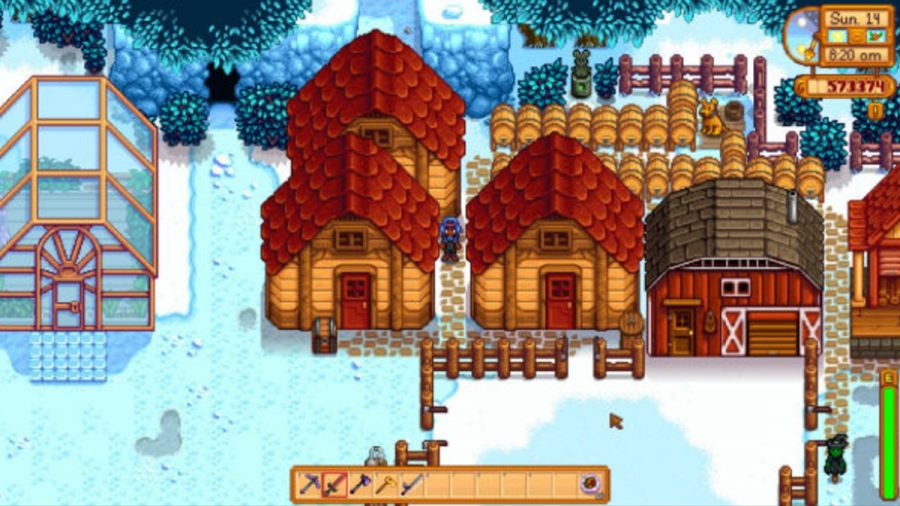Those who fraternise with me know one thing for certain: I hate business. I hate thinking about money, I hate doing my taxes, I hate checking my bank balance, and I absolutely hate the idea of building wealth just for the sake of it. In Stardew Valley, however, all of that changes…
To most, ConcernedApe’s game is a cute, relaxing rural-life simulator. Wander the forests, chat with the townsfolk, fish in a mountain stream, fall in love, have kids. Relax. The average farm is a tranquil pocket of order. A variety of merry crops sequestered away in the corner of wild field filled with trees and bushes. Perhaps some chickens, ducks, cows, and sheep, munching away at delicious grass on the shores of a little pond.
My farm is different. My farm is a work of agricultural menace. A blighted hellscape, purged of flora and fauna, all consumed to feed the fires of industry. Tightly-organised batches of only the most profitable of crops. Rows of warehouses, filled to bursting point with machines of production, belching forth great clouds of saccharin, cloying smog. A single animal enclosure containing a brace of pigs, forlornly scratching up truffles to supplement their master’s income.
All in service of one product: jam. This syrupy goo might as well be liquid gold. Fools pursue the flashier profit margins of Ancient Fruit wine, not calculating the extra production time that reduces daily profits. This jam is processed from only the rarest and most profitable of berries, the Ancient Fruit. Each industrial batch of precious preserves brings in over 300,000g. If I produce at least one batch a week, I’m pulling 1,500,000g a month, 6,000,000g a year.
It wasn’t always this way. I was once one of them. A content rural schmuck. I lived the simple life, gave back to my community, worked in harmony with nature. But something changed. The industrial bug bit, and before I knew what was happening I was calculating the profit margins of building an extra shed, and then another, and then another. A charming variety of crops, used as gifts for townsfolk, made way for only the most profitable of each season, which then became a single crop, all year round.
My friends and family, concerned by my fevered scratchings in accountancy notebooks, asked why I didn’t try making some real-life money, as I seemed to enjoy the virtual experience so much. This raised an interesting question: what is it about the virtual version of business that makes it so much more compelling?
Till we meet again: The best farming games on PC
Well, in Stardew Valley, profits are guaranteed. There’s no danger that my oversaturation of the Ancient Fruit jam market will drive down the prices – it will be profitable for all eternity. There’s no risk, ultimately. Any investment you make will pay off unless you actively jeopardise your efforts. The game offers the experience of economic success without the stress, risk, and red-tape.
Truth be told, despite the scale and detail, my Stardew Valley farm is very relaxing. It provides an intricate-but-unimportant repetitive task, which yields unlimited success and positive reinforcement. Earlier I framed my industrial model as a counterpoint to the chilled out vibe of the main game, but in truth it’s just an extension of that vibe. Part of the genius of Stardew Valley is that it retains its fundamentally peaceful tone regardless of how you decide to play it. Though directly inspired by Harvest Moon, it’s done something that many of those games haven’t: it’s perfected the relaxing farm format no matter how much jam you produce.

